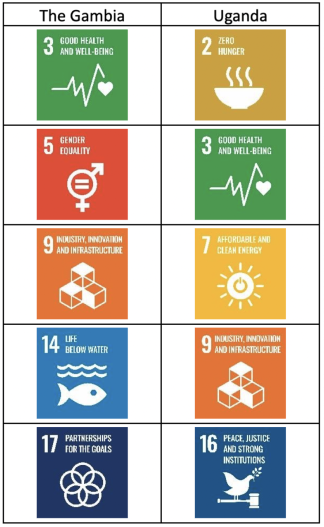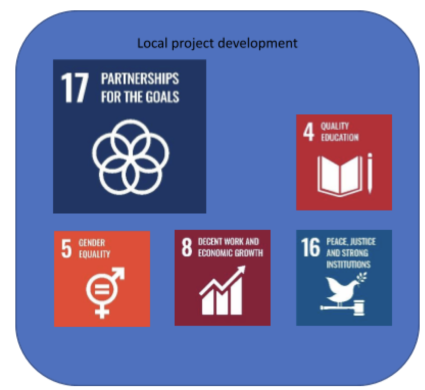
How do the SDGs fit into the SCIF?
The UN Sustainable Development Goals describe 17 interconnected aspects, which together cover what is needed for us all to live a good standard of life without degrading or polluting ecosystems and without depleting resources. None of the SDGs can be taken in isolation, but it can be useful to use them as a lens on situations, particularly when considering how the objectives of organisations relate to these wider themes. They set out a global call to action for all countries to commit to these measures through a partnership approach – something which is very much aligned with the ethos of the SCIF and the London School of Hygiene & Tropical Medicine.
In addition, the Gold Standard accreditation scheme being used by the SCIF to assess and validate offsetting projects connects both greenhouse gas (GHG) emissions reduction and the UN Sustainable Development Goals. Accordingly, carbon credits generated by the SCIF (and all Gold Standard projects) must also address one or more SDGs.
How do we know which SDGs are relevant?
At its core, the SCIF seeks to bring co-benefits for people and planet, generating carbon credits for climate action together with health and wellbeing knowledge in target countries and forming partnerships to deliver projects with communities.
Looking at the SDGs, three of them stand out as the high-level themes for SCIF focus: Good health and wellbeing (3), Climate action (13), Partnerships for the goals (17).
For each of these high-level themes, it’s useful to think about which other SDG areas will also need to be addressed in order to achieve them, or which will also be benefiting at the same time from interventions supported by SCIF partners and funders. This is quite specific to individual countries, and we drew on work by Price Waterhouse Coopers (PWC) to understand which SDGs need most attention in the countries SCIF will be working in.

Diving deeper for impact
By connecting other key goals with the high-level themes it can help our thinking for developing SCIF projects so that we bring together needs and opportunities that have synergy and co-benefits.
For improving local health particularly, we need to achieve:
- Clean air
- Access to affordable clean energy for cooking and other needs
- Clean water and sanitation
- Adequate nutrition
- Good reproductive health which is also part of gender equality targets

Action on emissions
SCIF’s assessment teams on the ground in Uganda and The Gambia are listening to people and communities and exploring local emissions sources as part of the in-country consultation process. Emissions come mainly from domestic and commercial woodburning, deforestation, wetland degradation, and poorly managed waste. Interventions to address this could come through improvements to local infrastructure and energy systems, ecosystem restoration, and supporting sustainable livelihoods. These interventions are represented in the SDGs above and will be important considerations in developing projects that have long term and multi-faceted impacts.


Working in partnership to develop the right project solutions
Partnerships for the goals are best explored through the local interactions needed for successful projects. There will also be international partnerships related to funding and sharing knowledge, but they are more established and better understood.
Interventions in low- and middle-income countries that are not set up collaboratively with the community tend to fail. When the holistic needs of all parts of communities are heard and projects are developed in partnership to meet those needs, experience shows that they will be more successful. Equality in community engagement and empowering local communities within their region are represented in SDGs 5 & 16 and are at the heart of the SCIF approach.
As well as ensuring effective impact, it is also important to co-develop projects with as much ownership and control staying within the community as possible so that people are not dependent on skills and resources from elsewhere, for example to keep equipment working. This development of knowledge, skills and self-sufficiency, including improved economic stability such as for growers and local industries are key to SDGs 4 & 8.
For any of the above interventions you could draw connections to other SDGs, however SCIF endeavours to maintain focus on the areas most in need of addressing and where our work will have the most impact. This involves looking at the target and indicator levels where the UN work has identified key aspects within each thematic goal.

